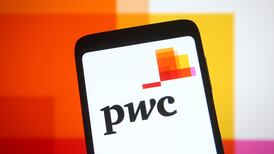Heineken, the world's second-largest brewer, wants to challenge leader Anheuser-Busch InBev in one of its key markets – and that's going to cost the Dutch brewer some lost profit.
The operating profit margin will expand about 25 basis points in 2018, below the target it had for past years, the brewer said Monday, warning of a headwind as it integrates a business in Brazil that it bought from rival Kirin for 2.2 billion real (€546 million). The stock fell 2.3 per cent as of 4pm in Amsterdam.
The Dutch company became the second-largest brewer last year in South America’s largest economy after Kirin stumbled amid competition with AB InBev. Heineken’s namesake brand had double-digit volume growth in Brazil in 2017, which is improving after a slump caused by a currency devaluation and political upheaval.
The integration is progressing “very well” and the dilutive impact on profit is less than the company first expected, chief financial officer Laurence Debroux said on a call with reporters. Heineken will give a new forecast for profitability next year, she said, as the company moves past earlier guidance set in 2014 for 40 basis points of annual margin expansion.
‘Ballpark’
Heineken still expects underlying margin improvement in the “ballpark” of the past two to three years, Ms Debroux said on a call later with analysts.
Revenue rose 5 per cent on a so-called organic basis in 2017, the company said. Analysts expected 5.7 per cent growth. Volume growth was led by Asia Pacific, where Vietnam is one of Heineken’s largest markets.
Adjusted operating profit rose 9.3 per cent on an organic basis to €3.76 billion, beating the consensus estimate.
Heineken said it would pay a dividend of €1.47 per share for its 2017 financial year, a 9.7 per cent increase from the previous payout to shareholders.
The brewer of Tiger and Sol lagers and Strongbow cider said beer volumes increased in all of its business regions in 2017, though growth in its European market was almost flat. The European performance was impacted by Polish discounters selling smaller volumes and cool summer weather in most of its markets in the second half. – Bloomberg / Reuters












